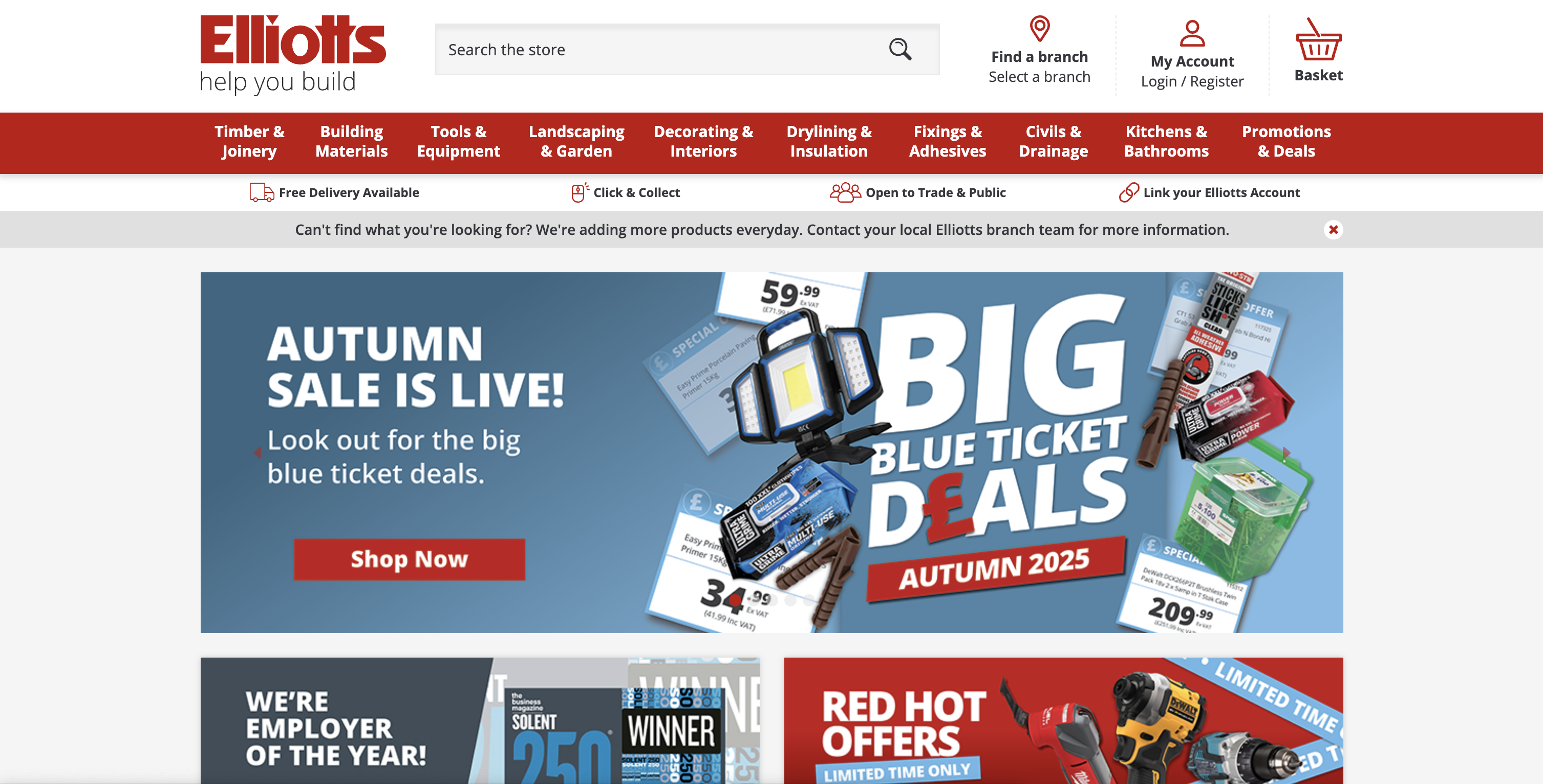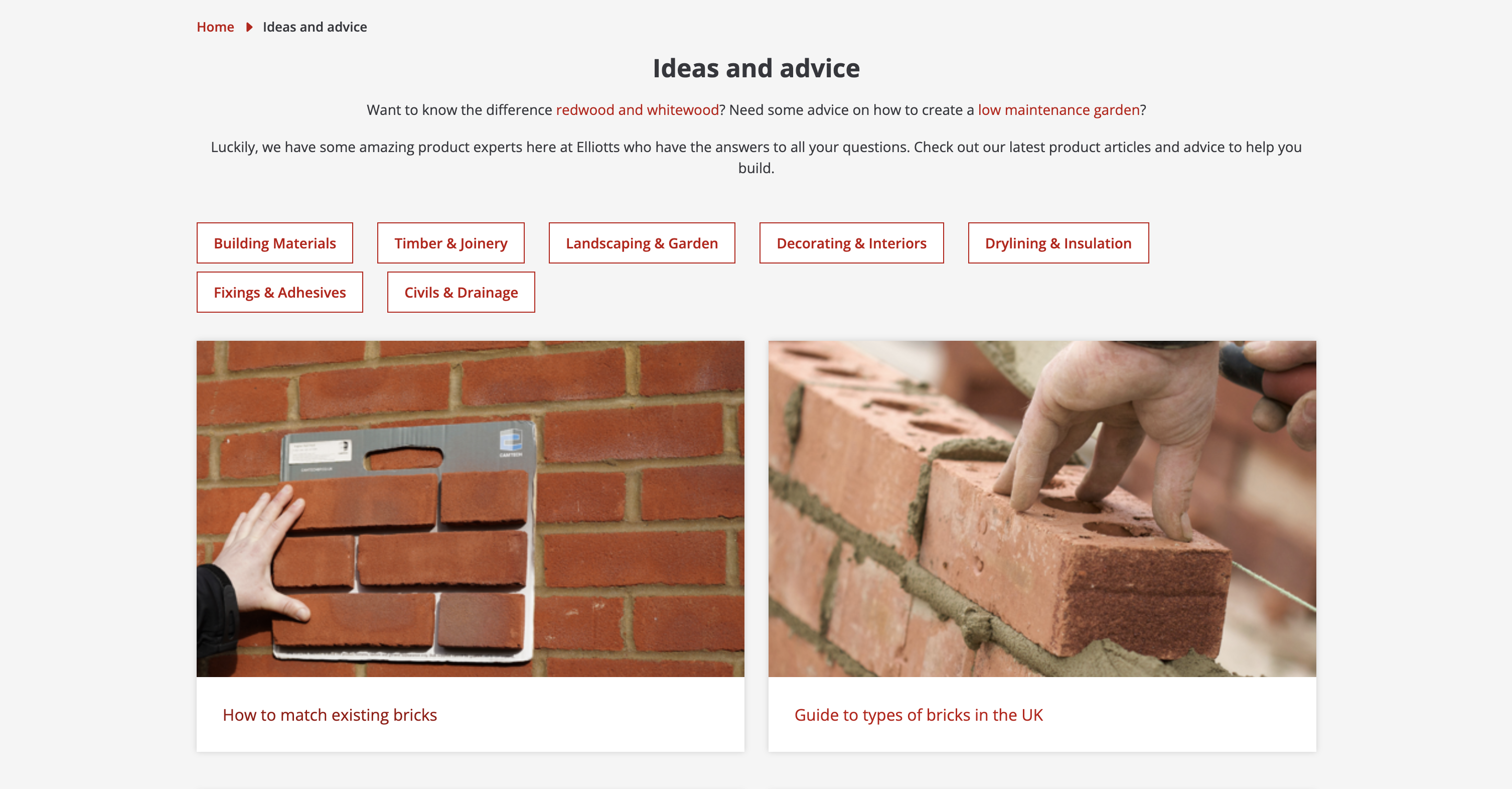The tool store sector looks unassailable when you view it through the lens of the incumbents. Screwfix and Toolstation own the shelf space and the delivery trucks.
Their range is exhaustive and their fulfilment networks are built for speed. Conventional wisdom suggests that competing against them is impossible. Yet our latest Salience Index for tool stores tells a different story. Over the last six months, the sector’s organic visibility grew by 8%, and that growth hasn’t come from the usual suspects.
Hidden in the data is a small group of brands quietly eating the giants’ lunch.
The Salience Index ranks 100 tool‑store websites by their organic traffic score. This score is calculated by summing estimated traffic for every keyword a site ranks in the top 100 positions.
It doesn’t attempt to replicate Google Analytics data (that would breach privacy), but it allows us to benchmark websites against one another and spot those with unusual momentum.
One brand jumps out when we compare the most recent data (August 2025) to the previous snapshot (February 2025).
Elliotts.
Elliotts isn’t a household name like Screwfix. It’s a family‑owned builders’ merchant based in Hampshire serving tradespeople and DIY enthusiasts. Elliotts leapt 17 places to rank 34th in our index and increased its estimated organic traffic by 81%, from 12,235 to 22,137 visits.
That’s ten times the industry average growth and the most significant relative jump among the top 50 brands.
Even more interesting is how they achieved it. Elliotts has embraced an approach that defies conventional tool‑store marketing. Instead of competing on range or price, the site focuses on education, expertise and a seamless transition from digital inspiration to local fulfilment. In a market where “everything everywhere” is the default, Elliott’s is winning by doing less but doing it better.

This article explains why Elliotts’ strategy matters, how it fits within the broader tool‑store landscape, and what other brands can learn from it. The goal is simple: highlight tactics that are both effective and genuinely different so your own search marketing can move beyond best practices and into the realm of thought leadership.
Market context
A sector built on scale and speed
Tool stores sit at the intersection of B2B building supplies and consumer DIY. The buying journey is messy: a tradesperson may research decking options on a Tuesday night, collect materials on Wednesday morning and buy additional fixings on the job. This dual audience (trade and DIY) means that websites must cater for professional users who know precisely what they need and novices who require guidance.
Historically, two brands have dominated this space. Screwfix and Toolstation operate catalogue‑style sites with enormous ranges and rapid fulfilment.
They’ve invested heavily in paid search and local distribution, making competing on product breadth or delivery speed difficult. Most challengers mimic this model, optimising for generic keywords and building extensive, undifferentiated catalogues.
The result is a sea of near‑identical sites, each vying for the same broad terms like drill driver or power tool set.
Why Elliotts stands apart
Content written for humans, not search engines
Many tool‑store sites still cling to outdated SEO practices. Keyword‑stuffed titles, thin category descriptions and blog posts exist solely to capture long‑tail queries.
Elliotts flips this script. The Ideas & Advice section on Elliotts’ website is a hub of genuinely helpful content. Articles like “Composite decking vs timber decking” aren’t just lists of keywords. They read like mini‑guides written by subject‑matter experts. The piece compares cost, maintenance, eco‑friendliness, colour retention, rot and slip resistance across timber and composite decking.
It uses a visual comparison table with star ratings to summarise the differences and provides bullet‑pointed advantages and disadvantages for each material. It even quotes Elliotts’ Timber Commercial Manager, lending authority and personality to the advice.
What makes this content exceptional is its interactivity. Each article is peppered with expandable FAQ blocks answering common questions (“How long do wood decks last?”, “Is C16 or C24 timber better?”).
These collapsed sections invite clicks, increasing dwell time and giving readers a sense of control. Articles end with clear next steps, such as links to “See All Decking” or “Visit a landscaping display”. Related articles and product links sit in the sidebar, guiding users deeper into the site without overwhelming them.
This approach satisfies user intent on multiple levels. Searchers looking for basic guidance find actionable advice. Professionals seeking technical details get product specifications and maintenance tips.
Every page is designed to help users complete their project rather than simply push a sale. In a market where many blogs are glorified category pages, Elliotts’ content feels like a digital magazine for builders and DIYers. That quality drives shares and natural links, contributing to its organic growth.

Seamless navigation and human‑centred design
Beyond content, Elliotts excels at site architecture. The top navigation bar is simple and descriptive: “Timber & Joinery”, “Building Materials”, “Tools & Equipment”, “Landscaping & Garden”, and so on. Hovering over a category reveals sub‑categories in a mega‑menu that mirrors how tradespeople think about products. This structure eliminates the frustrating search loops standard on catalogue sites.
The site also emphasises branch finders and local collection, acknowledging that heavy or specialist materials aren’t always suitable for courier delivery. On category pages, prominent banners invite you to “Download your new 2025 brochure” and “Find your local timber yard.” These calls to action are not generic but context‑sensitive, appearing where a user might be looking for offline support. Elliotts blends digital browsing with local service, a strategy big brands often overlook.

Expert voices and personalisation
Elliotts isn’t afraid to let its staff shine. Blog posts quote category managers and product experts by name. These voices give the brand credibility and warmth, transforming faceless product pages into conversations with knowledgeable advisors. It’s a subtle signal that real people are behind the site, ready to help you build a shed or choose the proper insulation.
This human tone is increasingly essential for E.E.A.T.
Personalisation also extends to the recommendation engine. Advice articles display “featured products” related to the topic, with prices and direct links to purchase. The selections feel curated rather than algorithmic; for example, the composite decking article recommends specific decking boards and installation accessories, not random power tools. This subtle alignment between content and commerce guides users towards relevant products without hard selling.
Aligning content with emerging search behaviour
Our keyword trend analysis in the Salience Index identifies several emerging brands and products in the tool space. Searches for “tool den” (+49% interest), “elliotts” (+14%), “eco flow” (+30%) and “jackery” (+145%) are all on the rise. Meanwhile, generic terms like “pressure washer” and “petrol strimmer” are declining sharply. Elliotts’ content strategy appears to align perfectly with these shifts.
Rather than chasing high‑volume but declining generic terms, the site produces guides for composite decking, porcelain paving, low‑maintenance gardens and EV charger installation—topics reflecting growing interest in sustainable building and energy efficiency.
This editorial focus is proactive rather than reactive. By identifying product trends before they become mainstream, Elliotts positions itself as a resource rather than a follower.
Commercial impact
The data clearly shows the results of these choices. Elliotts improved its organic traffic by 81% while the market grew by only 8%. Its jump of 17 places in the ranking suggests that this growth translates into real visibility gains, not just fluctuations in long‑tail traffic.
More importantly, this improvement has occurred without resorting to the usual paid media arms race. Elliotts’ success is built on deep content, intuitive navigation, local integration and genuine expertise—elements that are sustainable and difficult for competitors to replicate quickly.
The funnel below illustrates a simplified view of Elliotts’ user journey, based on observed behaviour patterns. A typical search visitor enters through a content or category page, explores advice articles, uses the branch finder or product pages for specification details and ultimately converts online or in‑branch.
While the numbers are illustrative, the funnel shape highlights Elliotts’ focus on education before conversion. Rather than pushing users straight to product listings, the brand nurtures them through advice and expert guidance. This approach improves SEO performance and builds trust—a critical currency when budgets are tight and choices are overwhelming.
Final Note
For marketers, Elliotts’ story reminds them that differentiation isn’t about doing more. It’s about doing what your competitors won’t. In a sector dominated by catalogue sites and price wars, there is enormous opportunity in education, authenticity, and hybrid user journeys. As AI reshapes search and consumer expectations evolve, brands that adopt these principles will scream from the rooftops in the next Salience Index.
Our reports are updated every six months, so you can stay ahead of industry shifts and make informed decisions. If you’d like support implementing a search strategy built on insights like these, get in touch with Salience. Our team is ready to help you build a marketing strategy that works as hard as you do.
